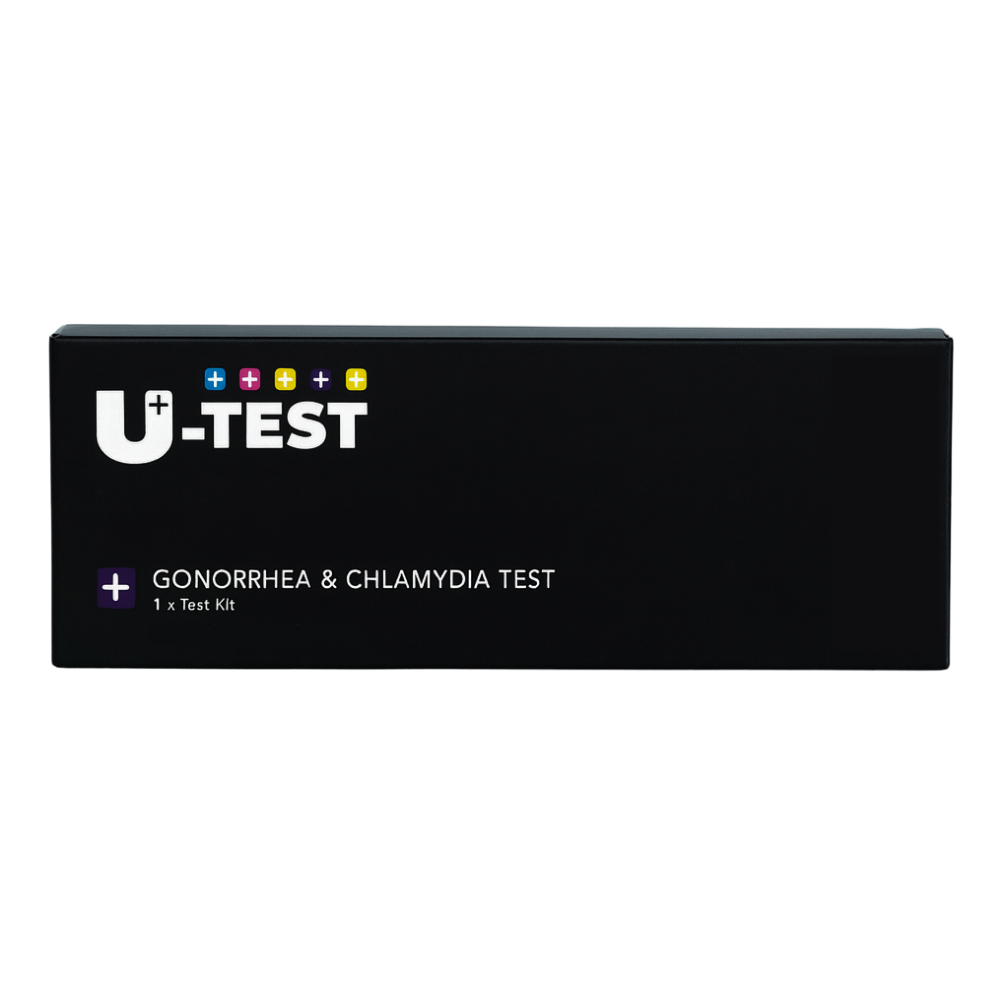Start Your Chlamydia and Gonorrhoea Test Kit Consultation
Complete a quick and easy questionnaire and one of our prescribers will make sure this treatment is right for you.

Treatments
Frequently Asked Questions
Have a question? We're here to help
What are chlamydia and gonorrhoea?
Chlamydia and gonorrhoea are common sexually transmitted infections (STIs) caused by bacteria. They can affect both men and women and often spread through unprotected sex. Many people don’t experience symptoms, which is why testing is so important.
What are the symptoms of chlamydia and gonorrhoea?
The symptoms can include unusual discharge, pain during urination, abdominal pain, or bleeding between periods. However, it’s common to have no noticeable symptoms at all. This makes regular testing crucial if you are sexually active, especially with new or multiple partners.
How are chlamydia and gonorrhoea diagnosed?
They are usually diagnosed through a urine sample or swap that checks for the bacteria. Home testing kits allow you to collect your own sample and send it to a lab for analysis. Results are then shared confidentially so you can access treatment if needed.
How accurate are home chlamydia and gonorrhoea tests?
Home tests that are processed in accredited laboratories are highly accurate, often comparable to clinic tests. The reliability depends on using the kit correctly and sending your sample promptly. They provide a convenient and discreet way to check for STIs.
Are home gonorrhoea tests accurate?
Yes, when processed by trusted laboratories, home gonorrhoea tests are very reliable. Accuracy rates are usually above 95%, making them a strong alternative to clinic testing. Following the instructions carefully helps ensure dependable results.
How often are gonorrhoea tests wrong?
False negatives and false positives are rare but can happen. This usually occurs if the infection is very new or if the sample wasn’t taken correctly. Retesting may be advised if you have ongoing symptoms or recent exposure despite a negative result.
Can STDs go undetected in tests?
Yes, if testing is done too soon after exposure, the infection may not show up yet. This is why health professionals recommend waiting at least two weeks after possible exposure to take a test. If symptoms appear earlier, it’s best to seek medical advice.
What causes chlamydia and gonorrhoea?
Both infections are caused by bacteria spread through unprotected vaginal, anal, or oral sex. They can also pass from mother to baby during childbirth. Using condoms and regular testing are the best ways to prevent transmission.
What can be mistaken for gonorrhoea?
Other conditions such as urinary tract infections, thrush, or bacterial vaginosis can cause similar symptoms. Because the signs overlap, only proper testing can confirm if you have gonorrhoea. This is why self-diagnosis is unreliable without a test.
Can your body clear gonorrhoea on its own?
Unlike some minor infections, gonorrhoea does not go away by itself. Without treatment, the bacteria remain in the body and can cause serious health complications. Antibiotics are required to cure the infection completely.
What happens if gonorrhoea is left untreated?
Untreated gonorrhoea can spread to reproductive organs and cause long-term complications such as infertility, pelvic inflammatory disease, or testicular pain. It may also increase the risk of HIV transmission. Prompt testing and treatment are key to avoiding these outcomes.
Why is gonorrhoea called “the clap”?
The nickname dates back hundreds of years, though the exact origin is uncertain. One theory is that it comes from old slang for brothels (“clapier” in French). Another is that it refers to painful treatments used before antibiotics were available.
How long do chlamydia and gonorrhoea take to show symptoms?
Symptoms, if they appear, usually develop within 1–3 weeks after exposure. However, many people never notice any signs. This is why testing is the only reliable way to detect an infection.
How are chlamydia and gonorrhoea treated?
Both conditions are treated with antibiotics prescribed by a healthcare professional. Treatment is usually simple and effective, but it’s important to complete the full course. You should also avoid sex until the infection has cleared.
Can chlamydia and gonorrhoea come back after treatment?
Yes, it’s possible to catch these infections again if you’re exposed to the bacteria in the future. Treatment clears the current infection but doesn’t make you immune. Regular testing and practising safe sex help reduce the risk of reinfection.















